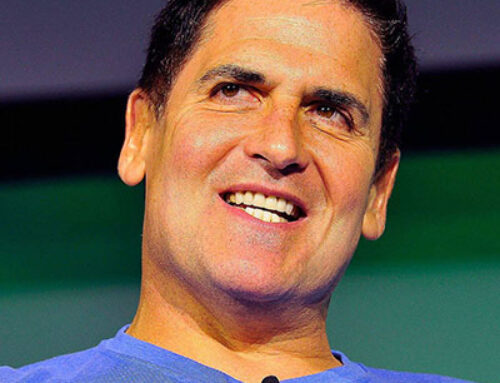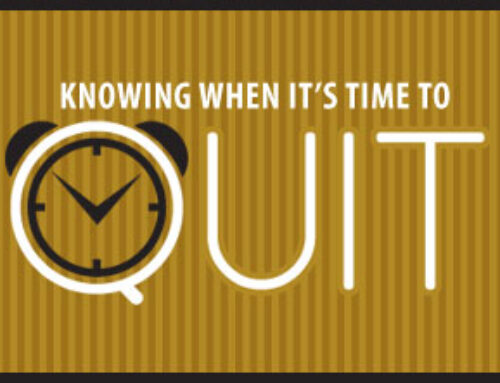Advice From Steve Jobs Is Only 5 Words
“Make a lot of mistakes.”
Steve Jobs’s emotionally intelligent approach to mistake-making can help you build a better business.
 The year was 1984. It was shortly before Steve Jobs left Apple and several years before Jobs would go on to conduct one of the biggest turnarounds in business history, bringing Apple from the brink of bankruptcy to make it one of the most valuable companies in the world.
The year was 1984. It was shortly before Steve Jobs left Apple and several years before Jobs would go on to conduct one of the biggest turnarounds in business history, bringing Apple from the brink of bankruptcy to make it one of the most valuable companies in the world.
Jobs was giving an interview to Michael Moritz, who at the time was a reporter covering Silicon Valley. In the interview, Jobs argued that the key to his success, what truly set him apart, wasn’t a superior design sense, or any other special gift.
“Things get more refined as you make mistakes and do them,” Jobs told Moritz. “So I’ve had a chance to make a lot of mistakes. Your aesthetics get better as you make mistakes.”
“But a real big thing is, the way I’ve always felt is, that if you’re going to make something, it doesn’t take any more energy–and rarely does it take more money–to make it really great,” continued Jobs. “All it takes is a little more time. Not that much more. And a willingness to do so: a willingness to persevere until it’s really great.”
There’s a great message in perseverance for anyone trying to build a better product or business. But it all starts with five key words from Jobs:
Jobs’s “make a lot of mistakes” philosophy is emotionally intelligent because it allows you to shift your mindset. It takes the process of making mistakes, which most view as negative, and reframes it as an integral key to making your business or product better.
Let’s break down a story from Apple’s history that illustrates the value of this advice, and see how you can apply it as you build your own business.
Fast forward to 2001, and Jobs had already begun Apple’s turnaround. However, the company faced an unexpected dilemma.
The iPod had just been released and became an overnight sensation. Designers and executives at Apple were understandably thrilled, but they also knew they needed to keep innovating–fast.
Why? Because the next logical step was to place MP3 players inside cell phones. It was only a matter of time before a major phone manufacturer figured out how to do it, which would make the revolutionary iPod obsolete.
And herein lay the problem: Apple didn’t make cell phones.
To avoid losing market share, designers quickly got to work on the first prototype of an Apple cell phone. Tony Fadell, one of the original designers, described it as “an iPod with a phone module, if you wanted to dial a number, it was like using a rotary dial.”
His conclusion? “It sucked.”
Jobs scrapped the entire project and went back to the drawing board. He pulled up plans from 1993’s Apple Newton–the company’s first attempt at a touchscreen device (and one of its biggest flops of all time). But a decade had passed, technology had advanced, and touchscreen research had improved. Jobs took one look at the plans and said, “Maybe this is the phone.”
And the rest is history.
Stories like these illustrate the value in Jobs’s philosophy: Apple’s success hasn’t been based on getting everything right the first time. In fact, critics say that the company doesn’t actually innovate. After all, the Mac wasn’t the first computer, the iPhone wasn’t the first smartphone, and the iPad wasn’t the first tablet.
However, Apple has built a reputation for “getting things right.” They find creative ways to take design, functionality, and user experience to the next level and give the public products they adore.
So, how do you apply this lesson to your business?
Let’s say you want to build an online course, or an app, or some other product. Start by studying your competitors, and identifying what problems or gaps their product has. How can you fill those gaps? Use that question to guide your process.
As you do that, you may be tempted to wait until your product is perfect before launch, or to beta test forever using a small test group. You shouldn’t. No matter how much you research, test, and iterate it won’t be perfect. Remember, the Newton was a total failure, and even the iPhone didn’t come close to iPhone two, or three, or 10.
Instead, make things as good as you can. Use user feedback (and your own good sense) to help you identify what needs to be improved. Then, improve. And keep improving. Continue to revise your product, again and again.
Persevere until it’s great.
Above all, remember: Mistakes are part of the journey. The more mistakes you make, the more chances you have to refine and improve.
All you need is a little more time, and the desire to see it through. Because if you can persevere, the result will be nothing short of greatness.
Thanks for your Wisdom JUSTIN BARISO




